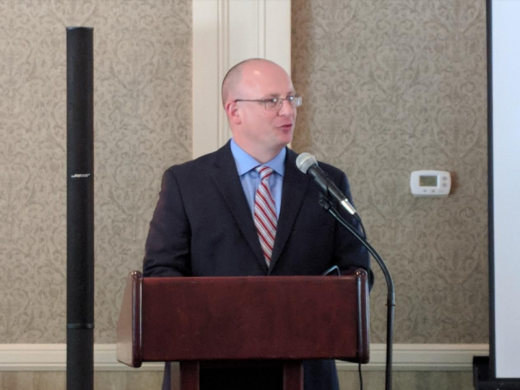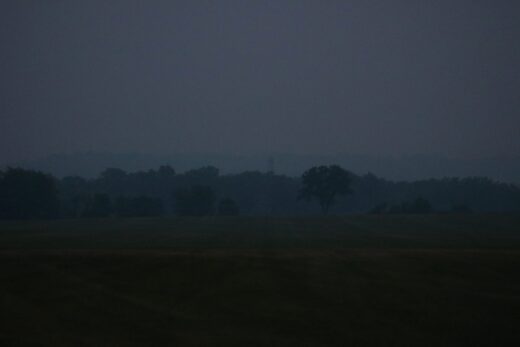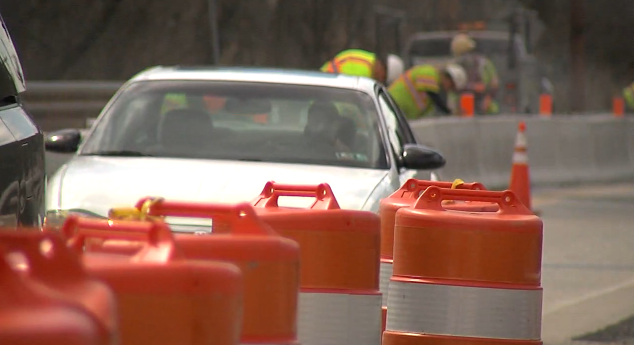Amid the smoke condition caused this week due to wildfires in Canada, TMA Bucks Executive Director Stephen Noll penned a letter to the community.
Noll’s nonprofit organization works to make improvements to transportation and public transit in Bucks County. The organization coordinates with local nonprofits, businesses, and governments on transportation-related initiatives and projects. The Bensalem Township-based organization also runs several safety programs.
Noll said while air quality alerts gained plenty of attention this week, they aren’t all that uncommon and unhealthy air poses a risk to the public.
Below is Noll’s full letter:
Unhealthy Air Quality – It’s Still There When You Can’t See It
On the evening of June 5, the Delaware Valley Regional Planning Commission issued a “Code Orange” air quality alert for the Delaware Valley for June 6 as smoke from Canadian wildfires blanketed the region and caused unhealthy levels of particulate pollution. A Code Orange alert denotes air quality that is unhealthy for sensitive populations including children, the elderly, and those with respiratory diseases.
School districts in Bucks County and beyond responded swiftly by limiting or canceling outdoor activities and taking other measures to limit student exposure to the unhealthy air, a response that became all the more appropriate as the air quality forecasts were subsequently upgraded to the rarely-seen “Code Red” level, at which air quality is considered unhealthy for the general population.
Schools and others who took action in response to the air quality alerts were correct to do so! The smoky haze covering our area was clearly unhealthy to breathe and the air quality alerts were obviously justified.
But did you know that May 12 and 31 were also Code Orange days, and that there were also 10 Code Orange days in 2022? To the best of my knowledge, there were no cancellations, closures, or delays for any of these. Children played outside, schools held outdoor activities, and life went on, likely without a care in the world, because the unhealthy air on these days could not be seen with the naked eye when, in reality, the hazard was just as significant as smoke-filled air. When we can’t see the pollution, we forget (or don’t care) that it’s there!
Nine of the ten Code Orange days in 2022 were the result of unhealthy levels of ground-level ozone. The United States Environmental Protection Agency describes ground-level ozone as an air pollutant that is the main ingredient in smog. It is created by a chemical reaction that occurs when pollutants from motor vehicles, power plants, and other sources react with sunlight. Ozone can inflame airways, aggravate respiratory ailments, and cause coughing or scratchy throat, among other possible effects, and the American Lung Association has described the effects of ozone as “like a sunburn on your lungs.”
This certainly sounds like a compelling reason to stay indoors and avoid activities that produce emissions during the day, and yet, these Code Orange days likely passed by largely unnoticed.
Another five Code Orange days in 2022 and 2023 were triggered by unhealthy levels of particulate matter in the air. Particulate matter is microscopic particles that can pass by our natural defenses and enter the bloodstream through the lungs. The four in 2023 are a direct result of the Canadian wildfires, but a fifth, on January 13, 2022, has no connection at all to wildfires. How did we respond on that date, assuming anyone remembers that it even happened
Just as the COVID-19 pandemic clearly demonstrated the benefits of working remotely instead of commuting to work, the wildfire smoke event of recent days should demonstrate the importance of recognizing forecasts for hazardous air quality – whether for certain vulnerable groups or the population at large – and taking real action to prevent exposure to unhealthy air and prevent it from occurring in the first place! Websites such as www.airqualitypartnership.org contain a daily air quality forecast and a wealth of information to help the public become more educated on the hazards of poor air quality and learn how to take real action toward its prevention.
The concern over poor air quality is very real, as recent days have demonstrated. The question, however, remains: How will we react to the next “Code Orange” if the “smoke” can’t be seen by the naked eye?










